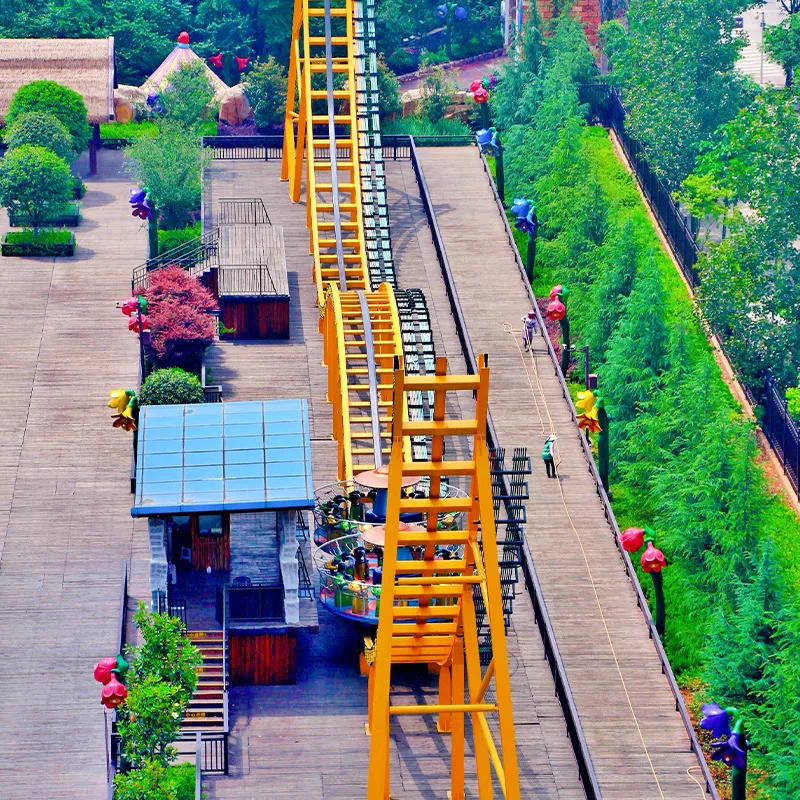- Albanian
- Arabic
- Belarusian
- Bengali
- Czech
- English
- French
- German
- Hebrew
- Hungarian
- Indonesian
- irish
- Italian
- Japanese
- kazakh
- Persian
- Russian
- Thai
- Uzbek
- Vietnamese
roll on roller coaster
Roll On The Thrill of Roller Coasters
Roller coasters have long been a symbol of thrill and excitement in amusement parks across the globe. These adrenaline-pumping rides, with their steep drops, sharp turns, and exhilarating speeds, offer an unforgettable experience for riders of all ages. In this article, we will explore the history, engineering, and psychological aspects of roller coasters, all while celebrating their unique ability to evoke joy and fear in equal measure.
A Brief History
The concept of roller coasters dates back to the 17th century, with the first known rides being constructed of wooden sleds that would slide down hills of ice in Russia. It wasn't until the 19th century that roller coasters began to resemble the rides we know today. The first commercial roller coaster, the Switchback Railway, was opened in 1884 at Coney Island, New York. It featured a simple design that allowed riders to coast down a wooden track, providing thrills without the complexity of modern coasters.
As technology advanced, roller coasters evolved significantly. The introduction of steel tracks in the 1970s allowed for smoother rides and more complex designs. Today’s roller coasters can reach breathtaking heights and speeds, with the tallest coaster in the world, Kingda Ka, soaring to a staggering 456 feet and reaching speeds of 128 miles per hour.
The Art of Engineering
The engineering that goes into creating a roller coaster is nothing short of remarkable. Engineers meticulously design each element of a coaster, from the initial ascent to the final drop, ensuring the ride is safe while maximizing excitement. The physics behind roller coasters is equally fascinating. They operate on the principles of gravity, inertia, and centripetal force. As riders ascend to the peak of a coaster, they gain potential energy, which is then converted into kinetic energy as they descend, creating that thrilling rush.
roll on roller coaster

The design process includes a detailed analysis of structural integrity and safety. Safety features such as seat belts, harnesses, and emergency brakes are integrated into every ride, ensuring that guests can enjoy their experience without undue concern. Despite this, the thrill of the ride is inherently linked to the element of risk, which adds to the excitement for many riders.
The Psychology of Thrill-Seeking
The appeal of roller coasters goes beyond their physical design; it delves into the psychology of thrill-seeking behavior. Many people are drawn to the adrenaline rush that comes with confronting fear. This response is tied to our body's fight-or-flight mechanism. When we anticipate a drop or a steep turn, our bodies react by releasing adrenaline, heightening our senses and elevating our mood.
For some, riding a roller coaster is a way to confront fears in a controlled environment. The thrill of the unknown, the speed, and the sensation of weightlessness create a unique experience that many find exhilarating. The joy that follows— often accompanied by laughter and shouts of excitement—contributes to a sense of community among riders. The shared experience of the ride can forge bonds, creating lasting memories with friends and family.
Conclusion
Roller coasters are far more than just amusement park attractions. They represent a fascinating blend of history, engineering, and psychology. As we line up for our turn, anticipation builds, and we prepare ourselves for the rush of exhilaration that awaits. For many, the experience of rolling on a roller coaster is a ritualistic escape from everyday life, a chance to indulge our inner thrill-seeker and embrace the joy of the moment.
So, the next time you hear the clattering of cars ascending a steep hill or catch the glimpses of laughter and screams echoing in the air, remember that roller coasters are not merely rides; they are gateways to adventure. Whether you are a seasoned coaster enthusiast or a first-time rider, the magic of roller coasters continues to captivate and thrill, proving that sometimes, in life, it's important to let go and simply roll on.
-
Flume Ride-Hebei Zhipao Amusement Equipment Manufacturing Co., Ltd.|Thrilling Water Attraction&Customizable DesignJul.30,2025
-
Flume Ride - Hebei Zhipao Amusement Equipment | Water Coaster, Thrilling DescentJul.30,2025
-
Flume Ride - Hebei Zhipao | Thrilling Water AttractionJul.30,2025
-
Flume Ride: Thrilling Water Attraction by Hebei Zhipao|Log Flume Manufacturers&Flume Ride DesignJul.30,2025
-
Flume Ride-Hebei Zhipao Amusement Equipment Manufacturing Co., Ltd.|Thrilling Water Coaster, Safe DesignJul.30,2025
-
Flume Ride-Hebei Zhipao Amusement Equipment Manufacturing Co., Ltd.|Thrilling Water Attraction, Safe DesignJul.30,2025
